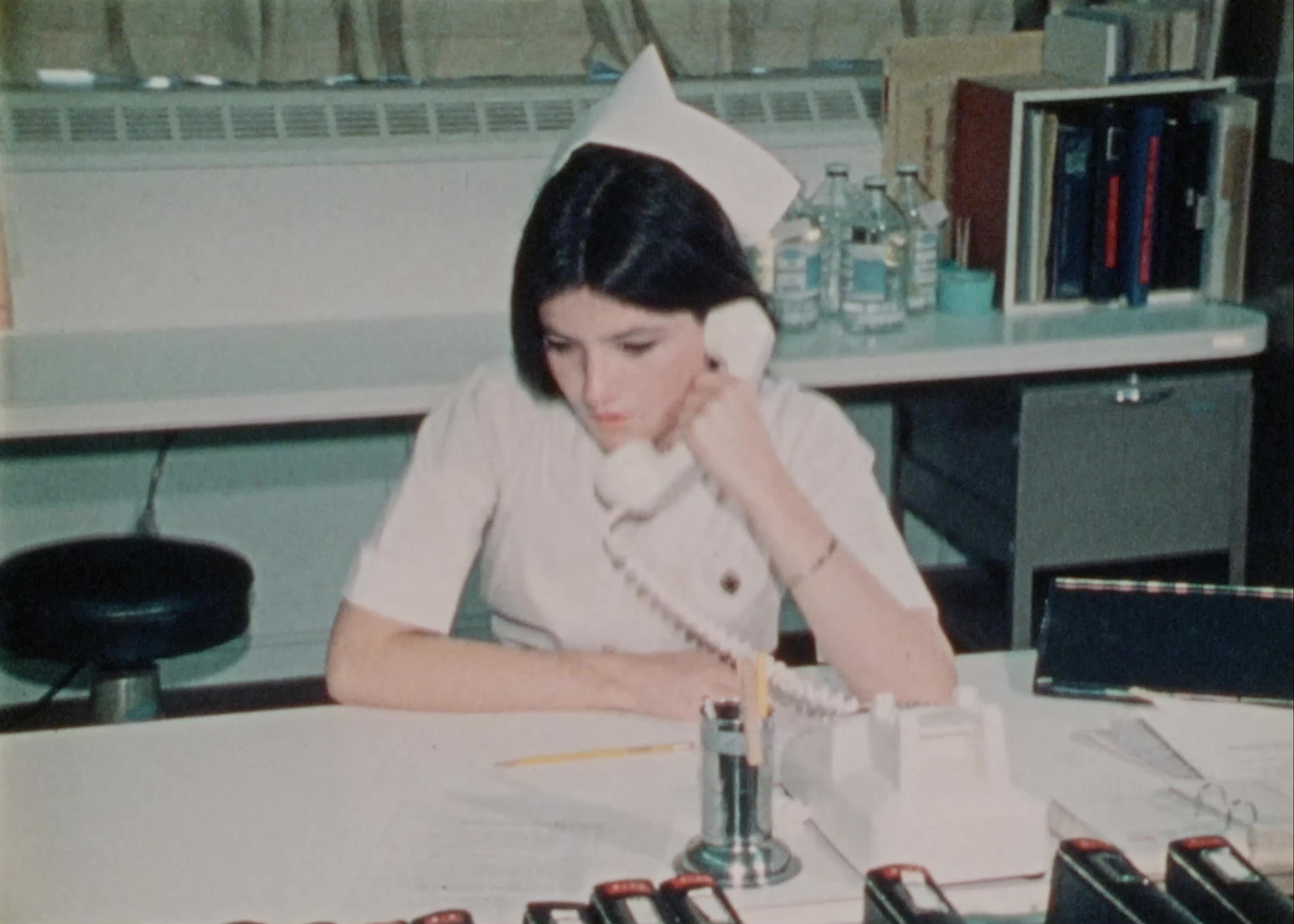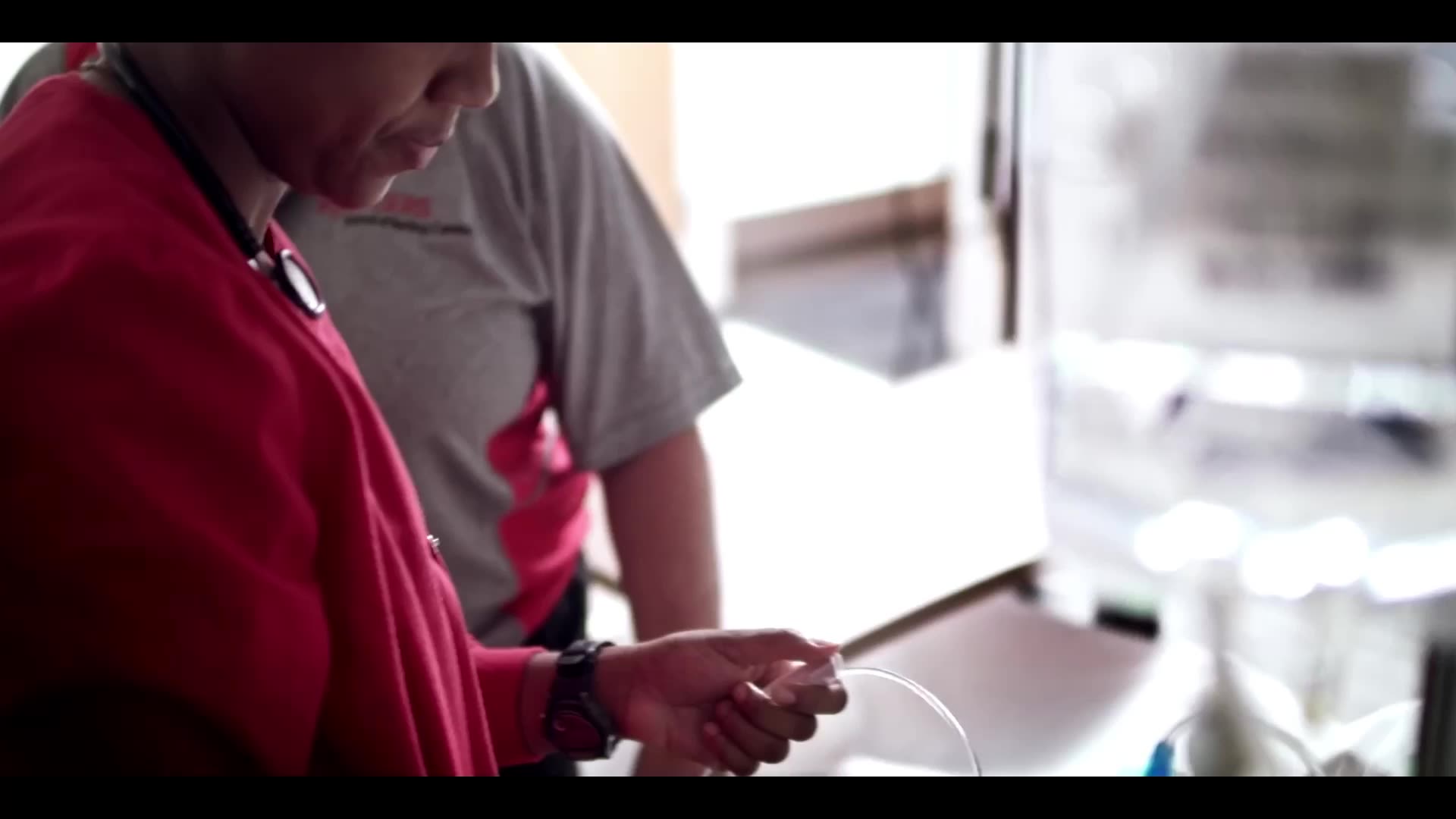
School of Nursing reflects on rich history of public health, welcomes opportunity-filled future


School of Nursing reflects on rich history of public health, welcomes opportunity-filled future
By Alina O'Donnell

In the past five decades, the Rutgers School of Nursing–Camden has grown from a small undergraduate nursing program that occupied a few shared offices to a robust, nationally ranked school with graduate, undergraduate, and certificate programs, more than 125 clinical partners, and over 10,000 square feet of cutting-edge clinical learning spaces. So much has changed, and yet so much has remained the same.
“If we’ve learned anything from the last 50 years,” said Donna Nickitas, dean of the School of Nursing, “it’s that the School of Nursing–Camden—like the city it serves—is scrappy and resilient.”


Dr. Alice C. Boehret, first chair of the nursing department, featured in a Courier-Post article on November 30, 1972
Dr. Alice C. Boehret, first chair of the nursing department, featured in a Courier-Post article on November 30, 1972
The first chair of the nursing department, Alice C. Boehret—a retired First Lieutenant who served in the Army Nurse Corps during World War II—accepted the role with a strong vision of a program that would “meet the needs of the community.” What remains resolute through all its iterations is a steadfast commitment to the public good.
“Although the wording of the mission of the School of Nursing has evolved over the years, the commitment to that initial vision remains unchanged and has been continued by a dedicated faculty and staff and a series of excellent leaders over the 50 years of nursing at Rutgers–Camden,” said Marie O’Toole, senior associate dean of the School of Nursing–Camden, who first joined the faculty in 1978.

Marie O’Toole, senior associate dean of the School of Nursing–Camden
Marie O’Toole, senior associate dean of the School of Nursing–Camden
In honor of the school’s semicentennial celebration, alumni joined current and former faculty in speaking about the challenges, innovations, and triumphs that have shaped the school into the powerhouse it is today.


When Rutgers University in Camden opened the doors of its nursing program in 1973, smoking was still permitted in hospitals, nurses wore caps and pinafore aprons, and patient records were kept by hand.
Even in its earliest days, Rutgers–Camden was different, said Donna Krakow SNC’76. For one, students did not rely on hospitals for their clinical rotations—a radical departure from the apprenticeship model of training that was standard throughout the United States.

Donna Krakow SNC'76
Donna Krakow SNC'76
At the time, the university was home to New Jersey’s only four-year, bachelor of science in nursing degree available south of Trenton. The original course catalogue advertised classes like “Sociology of the Family,” “Poverty and Urban Environmental Systems,” and “Migrant Health Care,” each designed to give students a broader understanding of how social conditions influence health. Clinical training was held off site, mostly in non-traditional community health settings.
“Camden went more toward a public health program as opposed to the traditional hospital-based nursing,” Krakow said. “Though it wasn’t popular at the time, I wanted to do more community-based nursing. We worked with Planned Parenthood, with health clinics throughout Camden, and even made house calls to patients.”
In a nod to the burgeoning women’s liberation movement, students were asked to trade in their uniforms for “street clothes” and lab coats.
“They said that you don’t need to see a white uniform to recognize someone’s profession. That was very novel at the time, and I was thrilled about it,” Krakow laughed.
Still, it was a challenging time to work in Camden. With the city still recovering from rapid deindustrialization and economic stagnation, poverty was at an all-time high. Malnutrition was a major problem, along with obesity, high blood pressure, diabetes, heart issues, and other chronic conditions common among low-income populations.
As nursing students training in hospitals checked vital signs and changed dressings, Krakow responded to house calls throughout the city, where she performed blood pressure checks and administered diabetes medications.
“I found that to be very, very rewarding,” Krakow said. “It’s so much easier to provide effective care when you see a patient in their living environment instead of just a hospital.”
Krakow credits her time at Rutgers–Camden with providing the foundational support she needed to pursue a career of impact. Through this model of learning, she developed the confidence and courage to care for all types of people in myriad settings. Her career has spanned all areas of health care, from bedside nursing to women’s health administration.
“When I took my first job in obstetrics, we started doing home visits—moms typically only stayed in the hospital for 24 hours, and then received a visit from a nurse,” Krakow said. “Of all my coworkers, I was the first one selected to do this, because I already had experience with home visits.”

Nurses at the Salford Royal Hospital take advantage of the newly-opened smoking facilities, providing a smoke room for off duty staff. (Photo by Fox Photos/Getty Images)
Nurses at the Salford Royal Hospital take advantage of the newly-opened smoking facilities, providing a smoke room for off duty staff. (Photo by Fox Photos/Getty Images)

Rutgers–Camden campus in 1974
Rutgers–Camden campus in 1974

A newspaper advertisement promoting continuing education courses, circa 1970
A newspaper advertisement promoting continuing education courses, circa 1970

Nursing faculty members in 1978: Dr. Alice Boehret, Dept. Chair and professor; Dr. Mary L. Hopkins, associate professor: and Mrs. Mary Kondracki, assistant professor.
Nursing faculty members in 1978: Dr. Alice Boehret, Dept. Chair and professor; Dr. Mary L. Hopkins, associate professor: and Mrs. Mary Kondracki, assistant professor.



Joanne Robinson
Joanne Robinson
The 1990s and early 2000s were a period of incorporating new technologies, building relationships, and growing the school’s research portfolio. As the industry upgraded from caps and clipboards to scrubs and simulations, the nursing program continued to prove its agility under the leadership of Joanne Robinson.
During the 2008 recession, the nursing workforce flourished as caregivers came out of retirement or took on extra shifts to bolster their incomes. But as the job market rallied and other professionals returned to work, many of those same nurses cut back their hours, leaving institutions struggling to find nursing staff once again. Hospitals were also increasingly feeling the weight of an aging population and dealing with a rise in chronic disease.
With a $47 million state grant, Rutgers–Camden was charged with addressing this critical shortage. In 2011, the nursing program was elevated to the School of Nursing, with Robinson as its inaugural dean.


Robinson thought strategically about how to best utilize the school’s newfound resources to prepare for the growing demands of a vulnerable population.
"We really struggled with [the question of whether we should] get primary-care-provider nurses, these advanced practice nurses, out on the street quick, quick, quick with a master's degree, which would be about half the time," Robinson said in an interview with The Philadelphia Inquirer.
"But we thought the degree of the future, the degree of the 21st century, is the DNP.”
Robinson focused on what the future of nursing education would look like. With a strong foundation in public health issues, policies, and legislation, she knew DNPs would be best suited to meet increasingly complex patient needs.
In 2014, the School of Nursing–Camden launched two new programs: the Doctor of Nursing Practice Program and the Wound, Ostomy, and Continence Education Program. Simultaneously, Robinson was managing the integration of the Stratford campus of the University of Medicine and Dentistry of New Jersey into the Rutgers School of Nursing–Camden. The nursing programs and personnel of the Stratford campus were transferred to the Rutgers School of Nursing–Camden in July of that year.
“Uniting the nursing programs and faculty of the two programs ensured continuity for students, an education that was available locally, and robust collaborations right here in in South Jersey.”
The establishment of these two new programs, coupled with the UMDNJ merger, more than doubled the school’s enrollment and ushered in a new era of visibility, setting the stage for continued growth and success in the region. In the years that followed, the school deepened new roots in the community with the establishment of health clinics at two separate subsidized housing complexes, a school-based health center at LEAP Charter School, and a string of new partnerships with New Jersey Farmers Against Hunger, the Center for Family Services, the Salvation Army Kroc Center, Project H.O.P.E., and more.





By 2017, the School of Nursing had outgrown its humble beginnings in Armitage Hall and made the landmark move to Fifth and Federal streets, breathing new life into a previously overlooked corner of Camden. Today’s nursing students swap notes and hold study sessions in an ultra-modern triangular building with floor-to-ceiling windows sporting views of the Philadelphia skyline. The glittering 10,700-square-foot-building sits proudly next to City Hall—a symbol of innovation and a hope in a community on the rise.

As new technology and changing population demographics demanded better infrastructure, the Nursing and Science Building provided ample expansion for the school’s teaching and learning spaces. The building is home to $62.5 million worth of facilities, including cutting-edge simulation spaces and a case-study room designed for an interactive approach to instruction.
While the façade may have changed, the state-of-the-art facility and those training and studying within it remain committed to the school’s enduring mission. As the city of Camden continues to battle concerning levels of obesity, heart disease, diabetes, and asthma, paralleling its high rates of poverty, the school counters with an emphasis on community-based health care. Students train and prepare to serve all populations with compassion and cultural competency.

“Our students don’t just make formulaic decisions,” O’Toole said. “Through our simulation exercises, we teach them to practice awareness of patients’ identities, religious affiliations, and more. How do their religious beliefs influence whether they will be compliant with medications? Do they have access to a scale at home? These are all examples of questions that might come up as we assess their clinical skills.”



Just two years after Donna Nickitas took the helm as the school’s second dean, the School of Nursing faced its greatest challenge to date—a global pandemic. Nickitas piloted the school's crucial efforts as it provided medical care and screenings for homeless guests at a local church, administered more than 100,000 COVID-19 vaccinations to at-risk populations throughout South Jersey, and pitched in to assist overburdened school nurses with COVID contact tracing—all while transitioning to an online learning format virtually overnight. The School of Nursing–Camden emerged from this battle stronger and with a new designation as a National League for Nursing Center for Nursing Excellence—a title awarded to just 23 nursing programs in the country.

Today’s nursing students share the same ambitions as their counterparts 50 years ago—a call to champion better health and well-being for the communities they serve. The program’s more than 4,000 graduates have gone on to work in nontraditional health care settings, from hospitals to community-based clinics, nonprofit organizations, and long-term care facilities.

Donna Nickitas, dean of the School of Nursing
Donna Nickitas, dean of the School of Nursing
When asked how she’s preparing for the next 50 years, Dean Nickitas paused. While she has some goals and ideas of her own, she is convinced innovation must originate with the lived experience of those in need. Just as the first cohort of graduates did, the School of Nursing–Camden will continue to live and grow alongside, engage with, and learn from the expertise of its community.
“When you start by asking what challenges your community is facing, you are well on your way to true innovation. We can’t always predict what trials await us, but what we can do is listen.”
– Donna Nickitas
Rutgers University in Camden becomes the first in-state institution south of Trenton to offer a four-year, bachelor of science in nursing degree.

The nursing program expands and adopts the Rutgers School of Nursing–Camden name.
The New Jersey Medical and Health Sciences Education Restructuring Act is approved, integrating Rutgers University with the University of Medicine and Dentistry of New Jersey.
- Funded by a $250,000 grant from the Robert Wood Johnson Foundation, the school launches the Rutgers–Camden/Cooper Collaborative for Upward Mobility in Nursing, an initiative to encourage health care paraprofessionals from underrepresented populations to pursue nursing careers.
- The School of Nursing–Camden launches the Doctor of Nursing Practice program.
- The School of Nursing–Camden launches the Wound, Ostomy, and Continence Nursing Education program.
- The School of Nursing–Camden launches a school-based health and wellness center at the Leap Academy University Charter School.
- The School of Nursing–Camden establishes clinics at two local, underserved housing complexes—Branches of Centerville and Ablett Village.

The School of Nursing–Camden moves into the 107,000-square-foot Rutgers University Nursing and Science Building.
- The School of Nursing–Camden is named a National League for Nursing Center for Excellence.
- Camden Mayor Victor Carstarphen awards a proclamation to the Rutgers School of Nursing–Camden in honor of National Nurse Practitioner Week.
- Rutgers–Camden launches a full-scale, door-to-door vaccination campaign throughout the city of Camden.
- The School of Nursing–Camden receives a four-year, $1 million grant from the Health Resources and Services Administration (HRSA) to launch the first-in-the-nation Clinical Instructor and Preceptor Preparation (CLIPP) Academy.
- A new partnership with AtlantiCare addresses the region’s critical nurse shortage by creating an equitable opportunity pipeline to high-demand nursing jobs.

Design: Karaamat Abdullah
